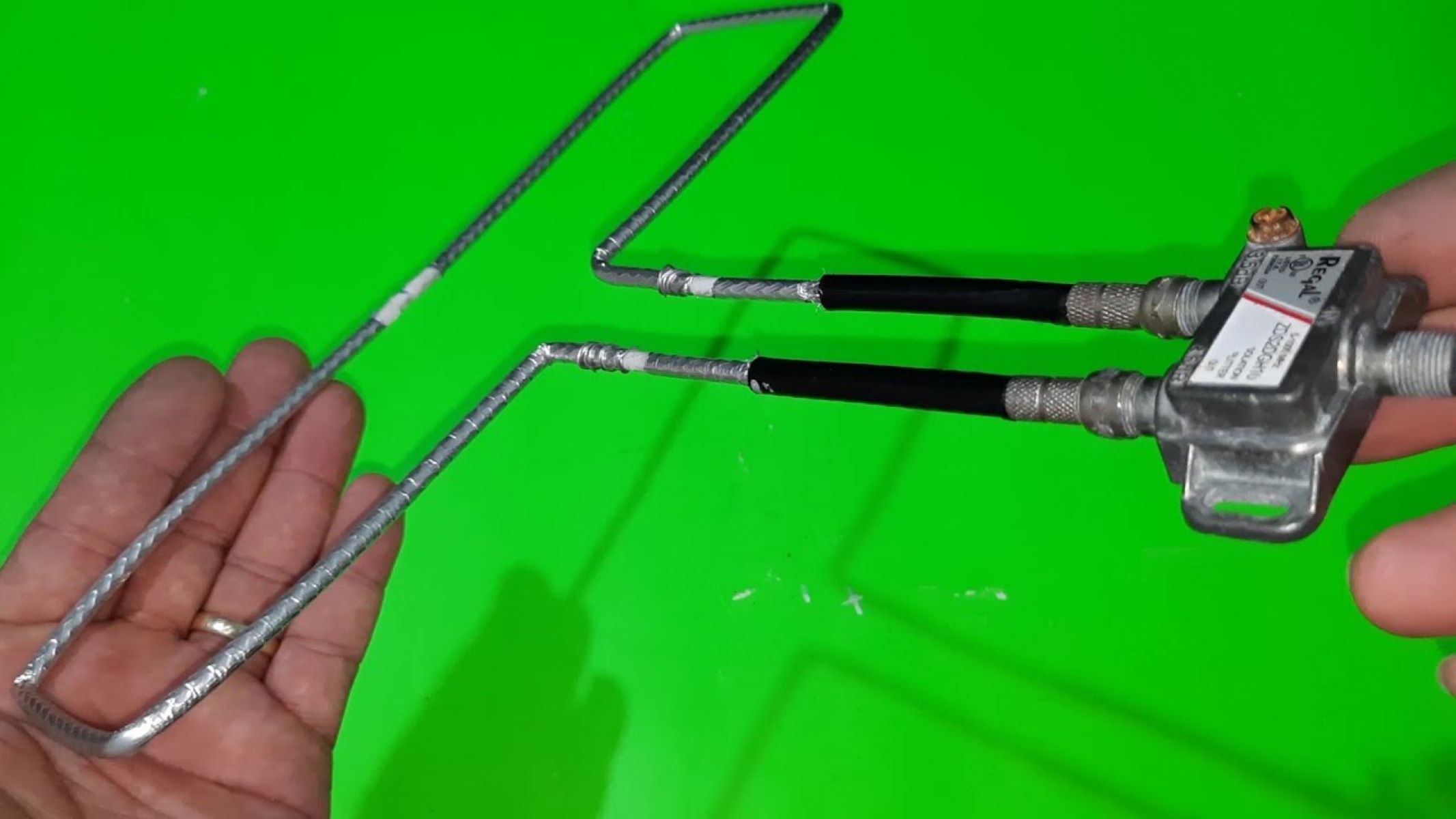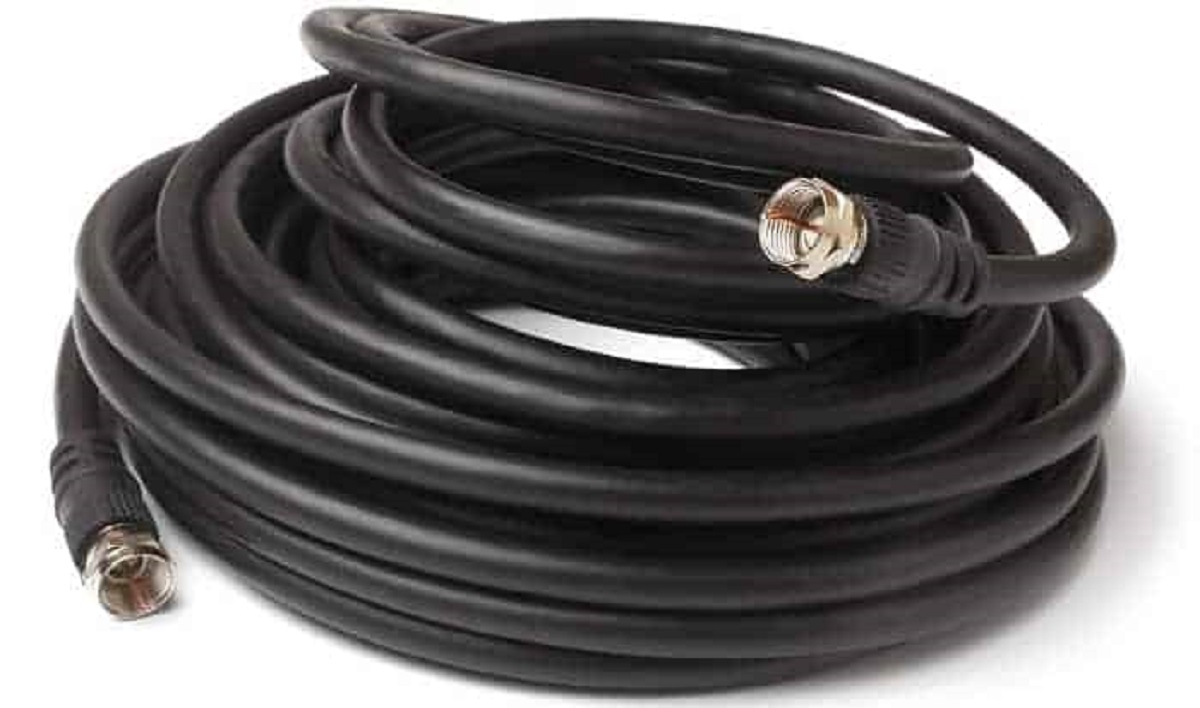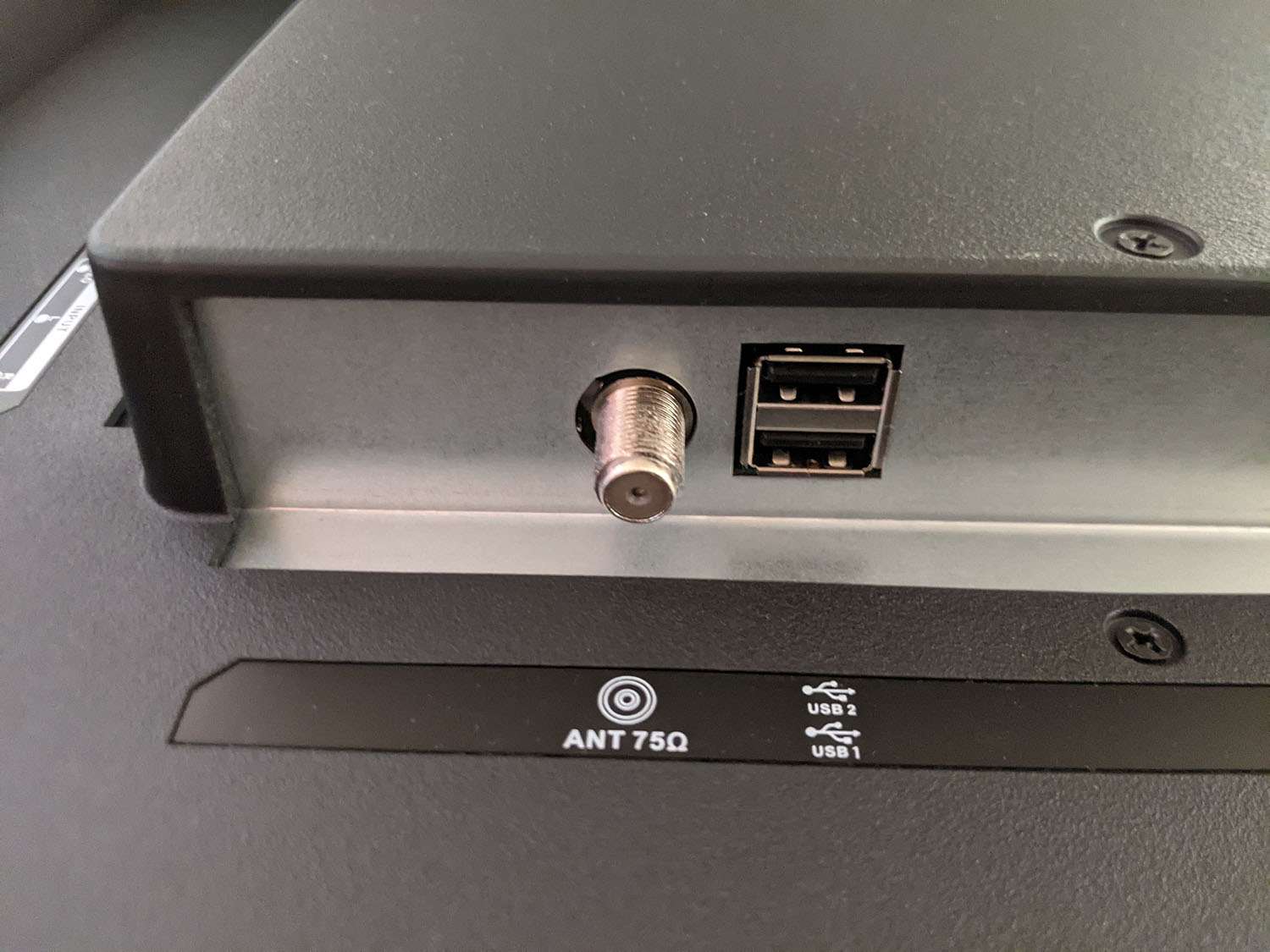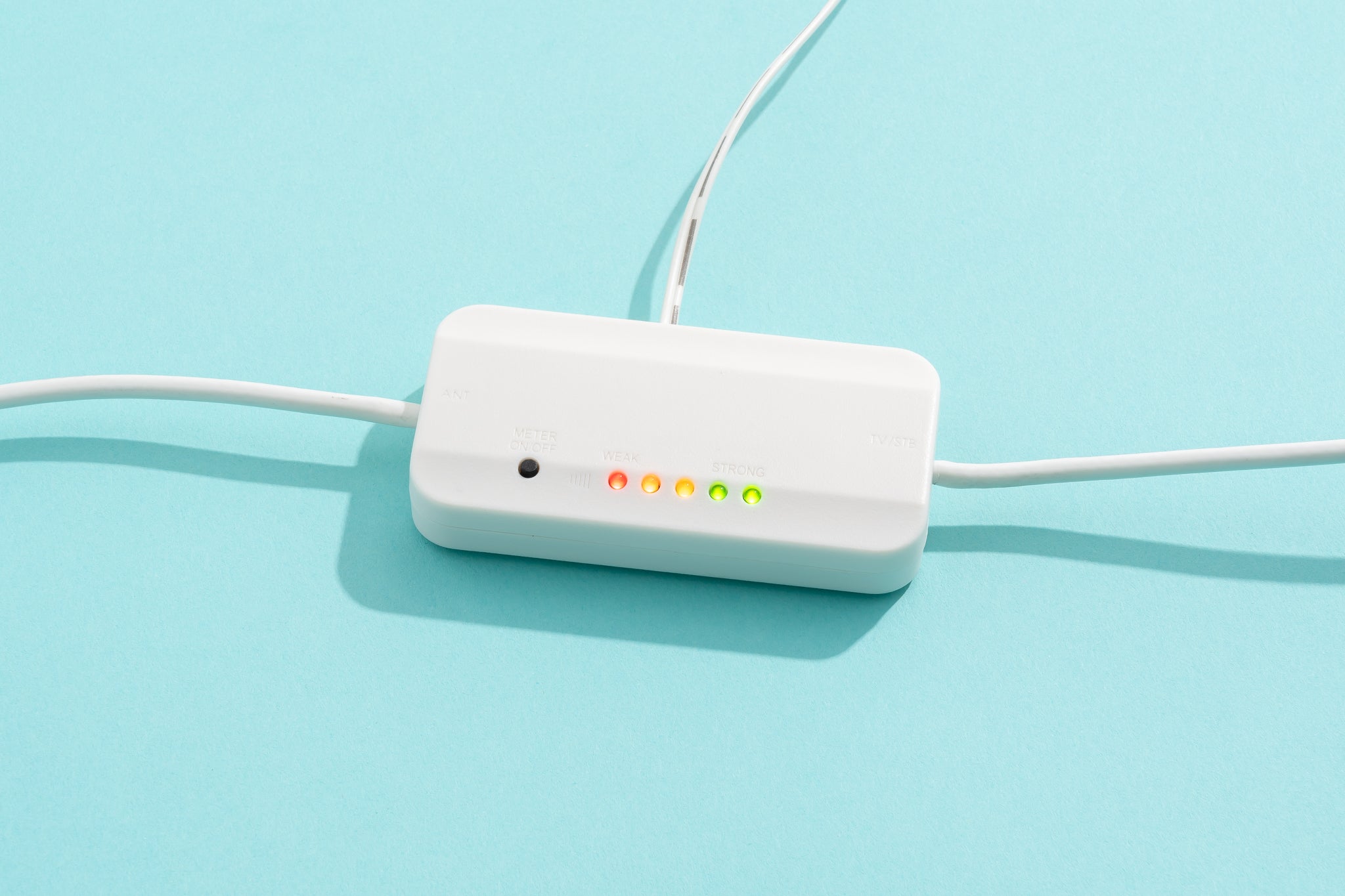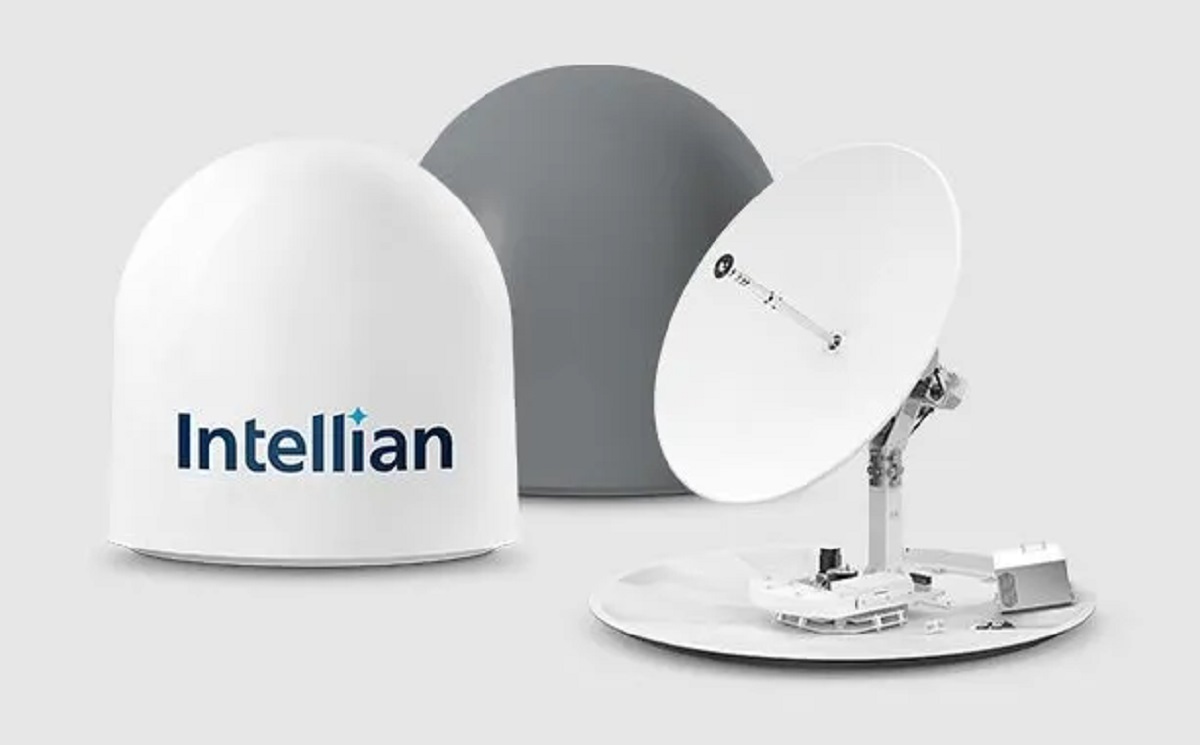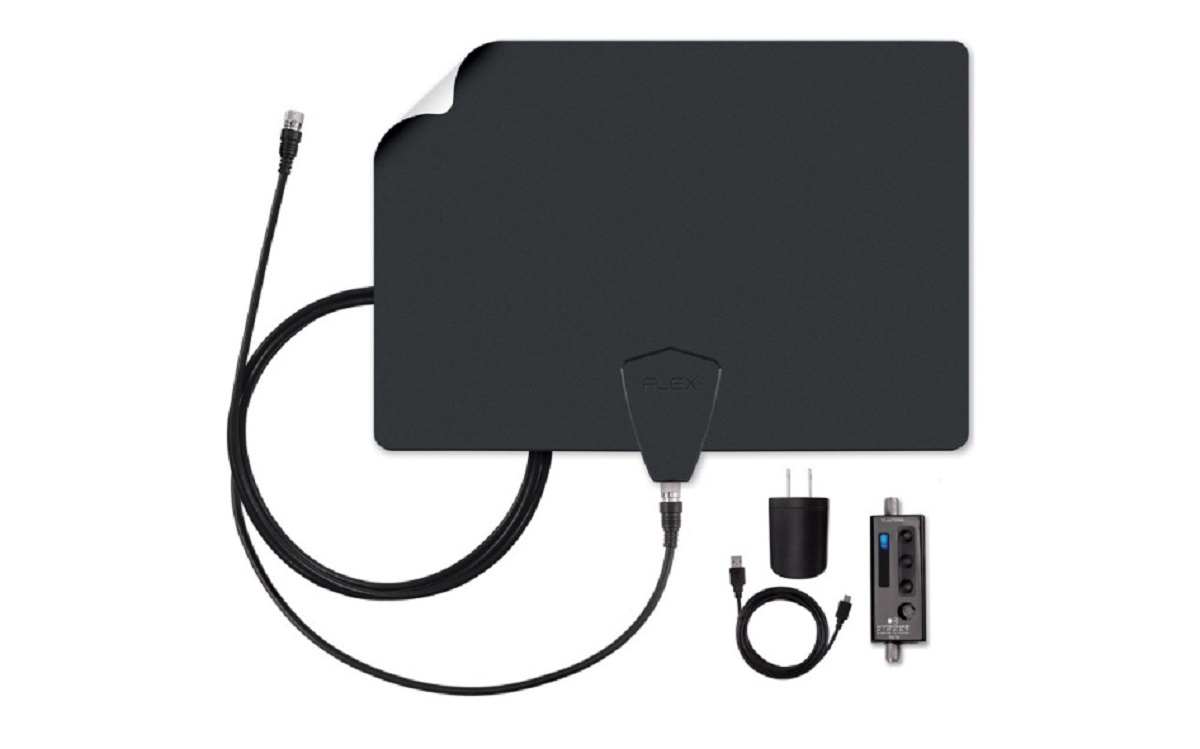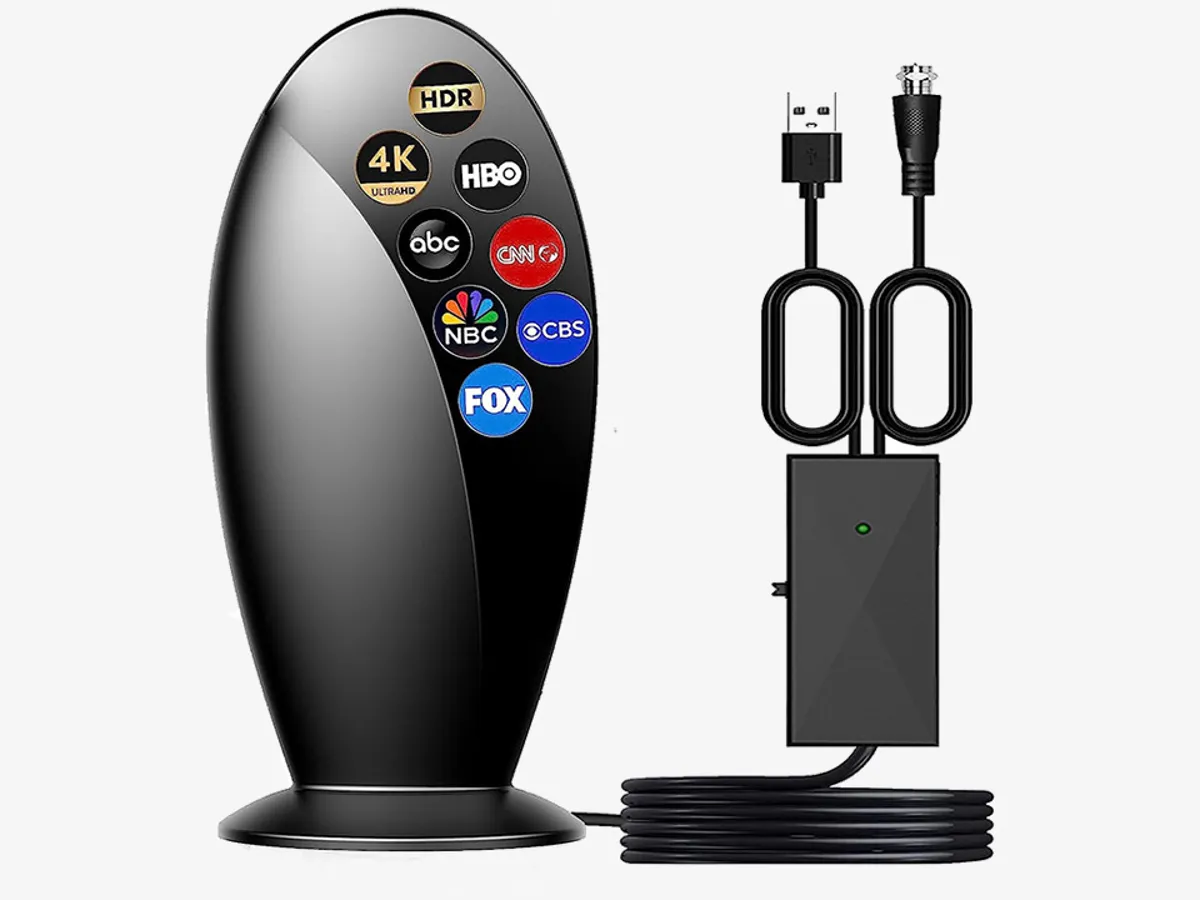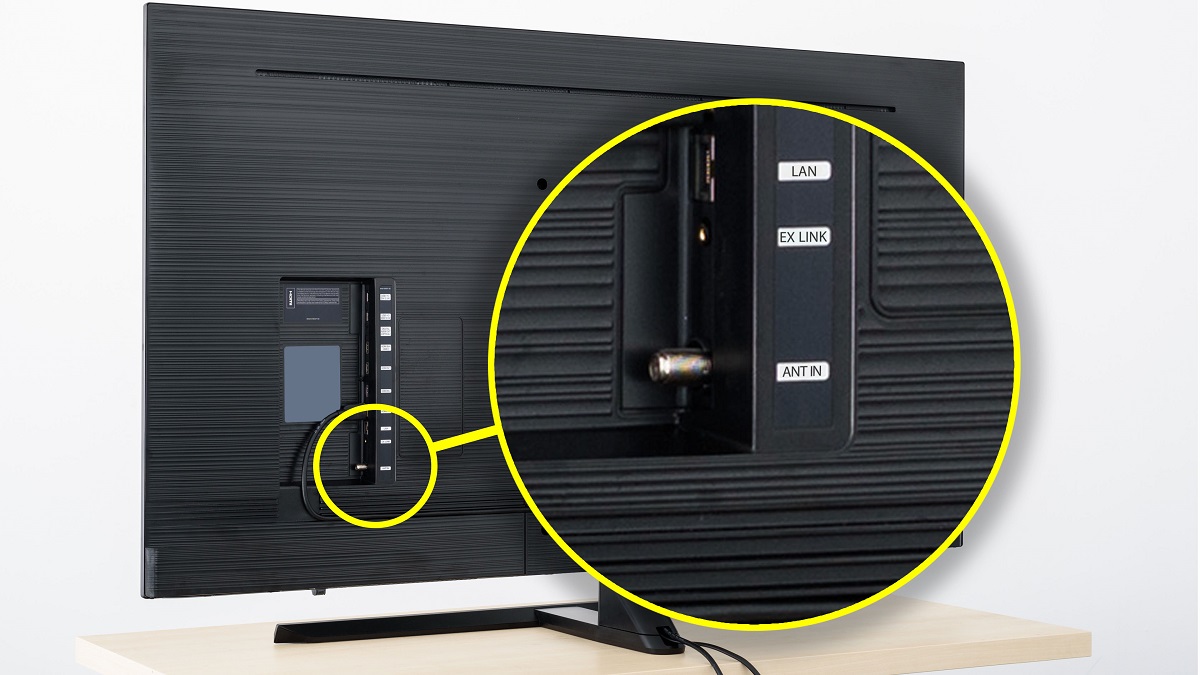Introduction
Connecting a coaxial cable to a TV antenna is a crucial step in achieving optimal reception and ensuring a seamless television viewing experience. Coaxial cables are used to transmit the audio and video signals from the antenna to the television. By properly connecting the cable to the TV antenna, you can enjoy clear and uninterrupted access to your favorite shows and channels.
In this article, we will guide you through the step-by-step process of connecting a coaxial cable to a TV antenna. Whether you are setting up a new antenna or replacing an old, damaged cable, this guide will provide the instructions you need. It’s a relatively simple process that requires a few basic tools and materials, and by following these steps, you can establish a solid connection between your antenna and TV.
We will start by identifying the coaxial cable and TV antenna connection ports. This step is essential to ensure that you are connecting the cable correctly. Then, we will guide you through the process of preparing the coaxial cable and TV antenna for connection. Taking the time to properly prepare both will ensure a secure and reliable connection.
Next, we will walk you through the actual process of connecting the coaxial cable to the TV antenna. This step requires precision and care to avoid any damage to the connectors or loss of signal quality. We will provide clear instructions to ensure a successful connection.
Once the cable is connected, we will then move on to securing the connection. Properly securing the cable will prevent it from coming loose or getting damaged, particularly in situations where there is movement or vibrations in the installation area. We will cover different methods to ensure a secure and stable connection.
Finally, we will test the connection to ensure everything is working correctly. This final step is crucial to determine if the cable is properly connected and if there are any issues with the signal transmission. We will provide troubleshooting tips in case you encounter any problems during the testing phase.
By following this step-by-step guide, you can easily connect your coaxial cable to a TV antenna and enjoy high-quality reception for all your favorite television shows and channels. Let’s get started!
Tools and Materials Needed
Before you begin connecting the coaxial cable to the TV antenna, make sure you have the following tools and materials on hand:
- Coaxial cable: Choose a high-quality coaxial cable that is long enough to reach from the antenna to the television. The length will depend on the distance between the two and any obstacles in between.
- TV antenna: Ensure that you have a suitable TV antenna. There are different types available, such as indoor antennas or outdoor antennas, so choose one that suits your needs and environment.
- Coaxial connectors: Depending on the specific connection ports on your TV antenna and television, you may need coaxial connectors. These connectors ensure a proper and secure connection between the cable, antenna, and TV.
- Wire cutters: You will need wire cutters to trim the coaxial cable to the required length and remove any excess insulation.
- Stripping tool: A stripping tool is essential for removing the outer insulation of the coaxial cable. This will expose the inner conductor and shielding for proper connection.
- Crimping tool: If your coaxial connectors require crimping, you will need a crimping tool to securely attach the connectors to the cable.
- Tape or cable ties: You will need tape or cable ties to secure and organize the coaxial cable to prevent it from getting tangled or tripped over.
- Testing equipment: A TV or a signal strength meter will be necessary to test the quality of the signal and ensure a successful connection.
Having these tools and materials ready before you begin the installation process will make the task smoother and more efficient. Take the time to gather everything you need, and ensure that the coaxial cable and TV antenna are of good quality to ensure optimal performance.
Now that you have everything prepared, let’s move on to the next step of connecting the coaxial cable to the TV antenna.
Step 1: Identify the Coaxial Cable and TV Antenna Connection Ports
Before connecting the coaxial cable to the TV antenna, it is crucial to identify the specific connection ports on both the coaxial cable and the TV antenna. This step ensures that you make the correct connections and maintain a reliable signal transmission. Follow the instructions below to identify the connection ports:
- Examine the coaxial cable: The coaxial cable consists of an outer insulation layer, a metal shielding layer, and an inner conductor. Look for the male connector at one end of the cable, which is typically a metal cylinder with a pin in the center. This connector will plug into the TV antenna.
- Identify the TV antenna connection port: Inspect the TV antenna to locate the female connection port. It is often located at the back or side of the antenna. The TV antenna connection port is designed to receive the male connector of the coaxial cable.
- Check for additional ports: Some TV antennas may have multiple connection ports, especially if they support various types of signals or have built-in amplifiers. Make sure you identify the correct port for connecting the coaxial cable.
Once you have identified the coaxial cable and TV antenna connection ports, you are ready to proceed to the next step of preparing both the cable and the TV antenna for the connection. Ensuring that you have correctly identified the connection ports sets the foundation for a successful connection and optimal signal transmission between the TV antenna and your television.
In the next step, we will guide you through the process of preparing the coaxial cable and TV antenna for the connection, which will ensure a secure and reliable connection.
Step 2: Prepare the Coaxial Cable and TV Antenna
Once you have identified the coaxial cable and TV antenna connection ports, it’s time to prepare both the cable and the TV antenna for the connection. Properly preparing these components ensures a secure and reliable connection. Follow the steps below to prepare the coaxial cable and TV antenna:
- Trim the coaxial cable: Measure the required length of the coaxial cable from the TV antenna to the television. Use wire cutters to trim the cable to the appropriate length, ensuring that it is neither too short nor too long. The ideal length will vary depending on the distance and any obstacles between the antenna and TV.
- Strip the cable insulation: Use a stripping tool to remove the outer insulation of the coaxial cable. Carefully follow the instructions on the stripping tool to expose the inner conductor and shielding. Be cautious not to damage the inner conductor or the shielding during this process.
- Inspect the cable connector: Examine the male connector at the end of the coaxial cable. Ensure that the pin in the center is intact and not bent or damaged. If there are any visible issues, consider replacing the connector with a new one to prevent any signal loss or interference.
- Check the TV antenna connection port: Inspect the female connection port on the TV antenna. Ensure that it is clean and not obstructed by any debris or dirt. If necessary, gently clean the port using a soft cloth or compressed air. This ensures a secure and reliable connection between the coaxial cable and the TV antenna.
By properly preparing the coaxial cable and TV antenna, you are laying the foundation for a successful connection. Trimming the cable to the correct length avoids any unnecessary slack or tangles. Stripping the cable insulation and inspecting the connector guarantee a clean and proper connection. Checking the TV antenna connection port ensures that there are no obstructions or issues that could affect signal reception.
With the coaxial cable and TV antenna prepared, you are now ready to move on to the next step: connecting the coaxial cable to the TV antenna. This step further establishes a secure and reliable connection between the two components.
Step 3: Connect the Coaxial Cable to the TV Antenna
Now that you have prepared the coaxial cable and TV antenna, it’s time to connect them together. Follow the steps below to ensure a proper and secure connection:
- Align the connector: Take the male connector at one end of the coaxial cable and align it with the female connection port on the TV antenna. The male connector should fit smoothly into the port without any forceful pushing or twisting.
- Insert the connector: Gently insert the male connector into the female connection port. Push it in until it is fully seated and secured in place. Ensure that the connector is inserted straight and not at an angle to prevent any damage to the connectors.
- Tighten any securing mechanisms: Depending on the type of TV antenna you have, there may be additional securing mechanisms to ensure a tight and stable connection. This can include screws, locking rings, or other fastening methods. Use the appropriate tool or method to secure the connection between the coaxial cable and the TV antenna.
- Check the connection: Once the cable is securely connected to the TV antenna, give it a gentle tug to ensure that it is firmly in place. Inspect the connection to ensure that there are no visible gaps or loose connectors.
Connecting the coaxial cable to the TV antenna is a critical step in establishing a reliable signal transmission. By aligning and inserting the connectors properly, you ensure a secure and stable connection. The tightening of any securing mechanisms enhances the stability of the connection, preventing any accidental disconnections that could affect signal quality.
With the coaxial cable successfully connected to the TV antenna, you are now ready for the next step: securing the connection. Securing the connection will provide additional stability and prevent any accidental disconnections or signal interruptions.
Step 4: Secure the Connection
After connecting the coaxial cable to the TV antenna, it is essential to secure the connection to ensure stability and prevent any signal loss or interference. Follow the steps below to secure the connection:
- Use tape or cable ties: Use electrical or duct tape to wrap around the connection point between the coaxial cable and the TV antenna. This provides additional support and helps prevent any accidental disconnections due to movement or vibrations. Alternatively, you can use cable ties to secure the cable to a nearby structure or mount.
- Organize the cable: Make sure to organize and route the coaxial cable in a neat and tidy manner. Avoid any sharp bends or kinks in the cable, as they can affect the signal quality. Use cable clips or supports to secure the cable along its route and keep it away from any sources of interference.
- Consider weatherproofing: If you are using an outdoor TV antenna, consider weatherproofing the connection between the coaxial cable and the TV antenna. This can be done using weatherproofing tape or sealant to protect the connection from moisture, rain, or other environmental elements.
Securing the connection between the coaxial cable and the TV antenna ensures that it remains stable and reliable over time. The use of tape or cable ties provides physical reinforcement and prevents any accidental disconnections. Organizing the cable and avoiding sharp bends help maintain the integrity of the signal, ensuring optimal performance.
Additionally, weatherproofing the connection is essential for outdoor TV antennas, as it protects the connection from the elements. It helps prevent moisture or water damage that could potentially interfere with the signal transmission.
With the connection securely in place, and the cable properly organized and protected, you can proceed to the final step: testing the connection to ensure everything is in working order.
Step 5: Test the Connection
After connecting and securing the coaxial cable to the TV antenna, it is crucial to test the connection to ensure that everything is working properly. Follow the steps below to test the connection:
- Turn on the television: Make sure the television is turned on and set to the correct input for the TV antenna.
- Scan for channels: Access the television’s menu and navigate to the channel setup or tuner section. Initiate a channel scan or auto-tune to allow the TV to search for available channels.
- Check signal strength and quality: Observe the signal strength and quality indicators on the television. Ideally, you should see a strong signal strength and high-quality reception for all available channels.
- Verify channel reception: Tune in to a few different channels to ensure that the signal reception is clear and there are no issues with audio or video quality.
- Check for any signal issues: If you encounter any signal issues, such as poor reception or missing channels, try repositioning the TV antenna or adjusting its orientation. You may also consider using an amplifier or signal booster if signal strength is weak.
Testing the connection is vital to ensure that the coaxial cable is properly connected and that you are receiving a strong and reliable signal. By scanning for channels and checking signal strength and quality, you can confirm that the connection is functioning as intended.
If you experience any issues with the signal, it may be necessary to make adjustments to the TV antenna’s positioning or consider using additional signal-enhancing devices. Troubleshoot any signal problems by repositioning the antenna, ensuring all connections are secure, and minimizing any sources of interference.
With the connection tested and verified, you can now enjoy high-quality reception and explore all your favorite channels and shows.
Conclusion
Connecting a coaxial cable to a TV antenna is a vital step in ensuring optimal signal reception and a seamless television viewing experience. By following the step-by-step guide provided in this article, you can successfully connect the coaxial cable to your TV antenna and enjoy high-quality reception for all your favorite channels and shows.
In this guide, we started by identifying the coaxial cable and TV antenna connection ports, ensuring that you understand the components involved in the connection. We then proceeded to prepare both the cable and the TV antenna for the connection, guaranteeing a secure and reliable setup.
The subsequent step involved connecting the coaxial cable to the TV antenna, aligning the connectors properly and securing the connection tightly. This step ensures that the cable remains firmly attached, preventing any signal loss or interference.
Afterward, we focused on securing the connection further, using tape or cable ties to reinforce the connection point and organizing the cable to prevent any damage or interference. Weatherproofing the connection, when necessary, protects it from environmental elements.
Finally, we emphasized the importance of testing the connection to ensure that everything is working correctly. By scanning for channels, checking signal strength and quality, and verifying the reception of various channels, you can confirm the successful establishment of the connection.
Remember, troubleshooting any signal issues that may arise involves repositioning the TV antenna, checking all connections, and minimizing interference sources. By following these steps, you can enjoy uninterrupted access to your favorite channels and shows.
So, go ahead and connect your coaxial cable to your TV antenna using the guidelines and tips provided in this article. With a solid connection in place, you can immerse yourself in the world of television entertainment with crystal-clear reception.







